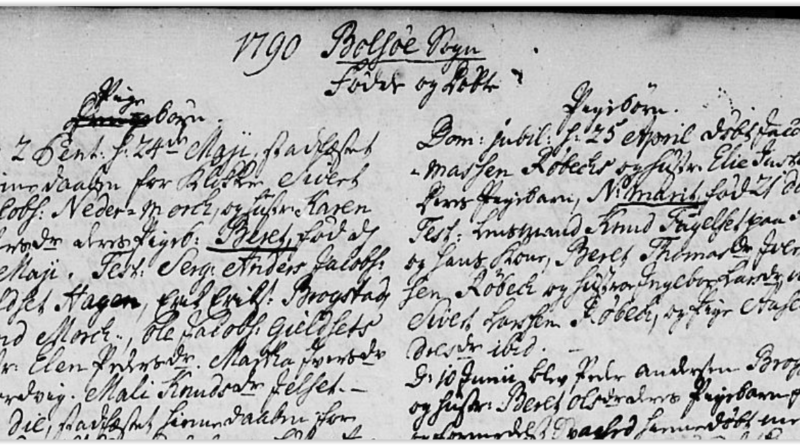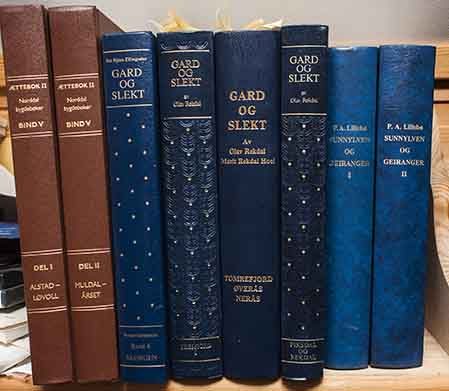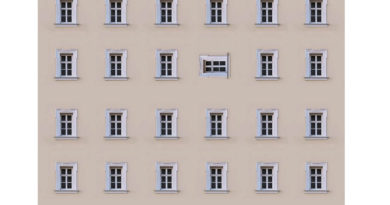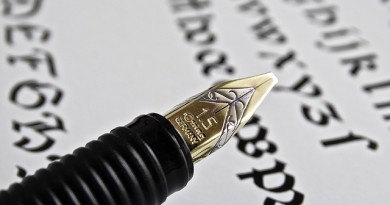How to decipher Norwegian farm names
Here are some tips and tricks for deciphering Norwegian farm names
I am often asked to help decipher handwritten farm names. I also respond to requests on genealogy fora. Even though I have gotten better at reading Gothic handwriting, I seldom “call” the name until I have consulted Oluf Rygh’s “Norwegian Farm Names.
Before we go on, I should say that this technique is not entirely failproof. At the end of the article I will cover a few things that you should note.
To effectively do this we need to know what parish the record is from. That’s why I prefer to be presented a link to the actual record, and not a cut out picture of a limited section.
For this article I picked at random a parish where I am not familiar with the farm names. Here is the heading of the church record:

Quick link: https://media.digitalarkivet.no/en/kb20061020010441
I then go to “Norwegian farm names”. I suggest you open this page and follow along my description.
As the counties are presented with the old designation “amt” and also their old names. I always check the introduction that tells me the old and new county names. I just can’t seem to remember them.
The opening page also have a link to “More information about Norwegian Farm Names”
We have stated that we are dealing with the parish register from Rakkestad. When we start writing the name in the “Parish” field we see that a drop down menu appear and show us how we are doing: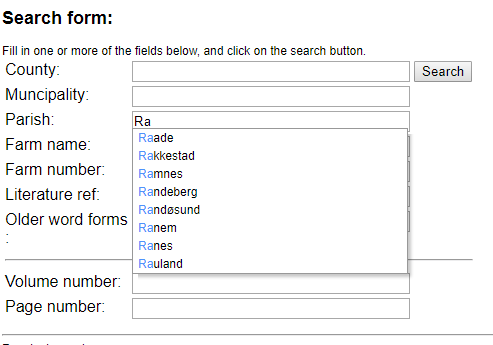
When we then choose Rakkestad, we are presented with a list of all the farms in Rakkestad parish. That is; Rakkestad parish and the farms and their numbering as they were in 1886 when “Norwegian farm names” were published. This might have changed since.
This is the start of this list.

If you followed the link above you might already have had a look at the church record. Here is a screen grab where I have highlighted some names (This is on the top right side of the linked page. You can hover the mouse over this picture to enlarge it):

I have put in some numbered boxes. If we compare the names in the record with the farm names in “Norwegian farm names” we see that
- “Nordre Kaaen” must be what Rygh lists as Kaan nordre.
- “Mellebye” → Melleby (søndre)
- “Klepper” is hard to read, but helped by Rygh we recognise the name as Klepper
- “Fladberg” → Flatberg
- “Siølerud” must be Skjølerud
If we, like in example no. 5 find a name that is spelled somewhat similar, but not quite, we can check the box in front of the name, click the “Show” button. This brings up a list of different spellings of the farmname, found in various sources.
That is all there is to it. To learn to recognise the Gothic letters, you might want to check out “The Gotich syllabus”
– We may come across farm/place names that is not listed on this website.
– “Aa” is used instead of the modern “å”
– There are some parishes with the same name. We need to make sure we look at the right parish.
I have had a lot of help from the “Norwegian farm names” website. It is often the only way I, for certain, can determine a name.
If you have questions or comments, don’t hesitate to leave a word below or send me an email by going to the “Contact page”

